
Starting June 1st, 2023 Our warehouse fee will be $0.65/cubic foot per month
In effort to lower the warehouse storage fee during inflation, we have went narrow aisle racking.This construction took us four months but the project is finally completed. With narrow aisle racking, we are able to drop storage by 24%.We as partners will go through this inflation together.
01/07/2025
Shipping medical equipment and supplies globally is a critical aspect of the healthcare industry, ensuring that essential tools and resources reach the right destinations at the right time. Whether it’s life-saving devices or everyday medical supplies, the global movement of these items requires careful planning and expertise. In this guide, we’ll explore the best practices, regulations, and key considerations for shipping medical equipment and supplies across international borders.
The global shipping of medical equipment and supplies is a critical component of the healthcare industry, ensuring that essential devices reach those in need worldwide. The demand for these services has been steadily increasing, with the medical devices and equipment logistics market projected to grow from USD 68.67 billion in 2025 to USD 100.02 billion by 2030, at a compound annual growth rate (CAGR) of 7.81%.
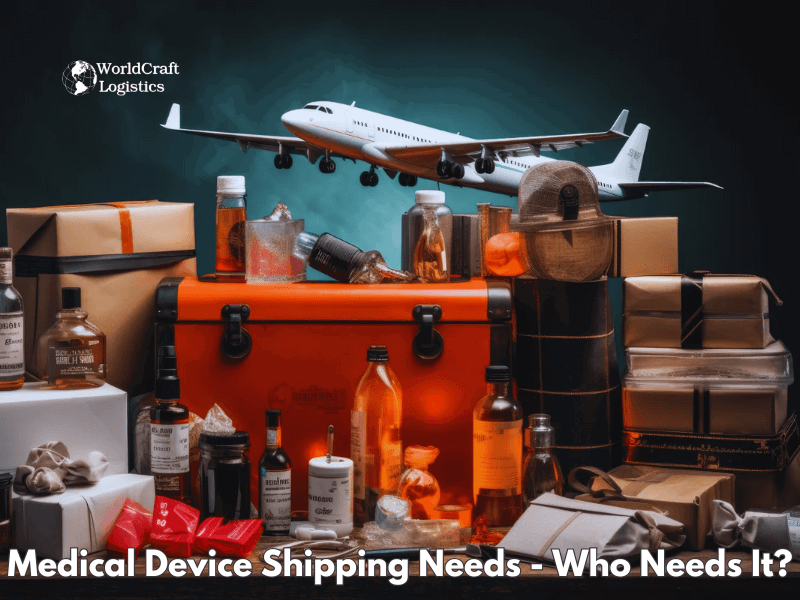
Who Requires Global Shipping of Medical Equipment and Supplies?
Hospitals and Clinics: These facilities rely on the global supply of essential equipment like diagnostic tools and surgical instruments to deliver uninterrupted healthcare services.
Medical Device Manufacturers: With the medical device market expected to grow to nearly $800 billion by 2030, manufacturers need efficient global shipping to meet rising demand.
Humanitarian Organizations: NGOs and aid agencies depend on fast and reliable shipping to deliver life-saving medical supplies to disaster and crisis zones.
Research Centers: Laboratories require specialized medical equipment for cutting-edge research and innovation, making global shipping crucial.
Home Healthcare Providers: With growing demand for home-based care and wearable technology, timely delivery of medical supplies directly to patients is essential.
Government Agencies: Health departments procure supplies globally to support public health initiatives and emergency preparedness.
The global shipping of medical equipment and supplies is essential for a diverse group of stakeholders, each playing a pivotal role in delivering healthcare services worldwide. As the medical device market continues to expand, the importance of efficient and reliable shipping solutions becomes increasingly paramount.
When it comes to shipping medical equipment and supplies, choosing a reliable partner is critical. Worldcraft Logistics stands as a trusted global bulk freight partner, ensuring your medical supplies reach their destinations safely, efficiently, and on time.
Specialized Expertise: With years of experience in handling sensitive shipments, we ensure compliance with international regulations for medical supplies and equipment.
Temperature-Controlled Solutions: Many medical items, such as vaccines and diagnostic tools, require strict temperature control. Our state-of-the-art facilities and logistics systems guarantee optimal conditions throughout transit.
End-to-End Support: From packaging to customs clearance, our team manages every aspect of your shipment, ensuring a seamless experience.
Global Reach: With an extensive network of carriers and partners, we offer unmatched coverage to deliver your medical supplies anywhere in the world.
Time-Sensitive Deliveries: In the healthcare industry, time is critical. Our express freight solutions ensure that urgent shipments are prioritized and delivered promptly.
Worldcraft Logistics understands that every shipment is unique. Whether you’re a hospital, NGO, or medical device manufacturer, we customize our services to meet your specific shipping needs. Partner with us today to ensure the safe and efficient transportation of your medical equipment and supplies. Reliable, secure, and global-Worldcraft Logistics is your bulk freight partner you can trust.
Shipping medical devices involves a wide variety of equipment essential for healthcare delivery, ranging from small diagnostic tools to large imaging systems. Below is a breakdown of the types of medical devices that can be shipped globally:
📌 Diagnostic Equipment
Devices such as blood pressure monitors, thermometers, glucose meters, and pulse oximeters.
Lab equipment for testing, such as centrifuges and analyzers.
📌 Surgical Instruments
Tools used in operations, including scalpels, forceps, and retractors.
Advanced robotic surgical systems for precision surgeries.
📌 Imaging Systems
Large and delicate equipment such as X-ray machines, MRI scanners, CT scanners, and ultrasound devices.
Portable imaging devices for field diagnostics.
📌 Life-Saving Devices
Ventilators, defibrillators, oxygen concentrators, and dialysis machines.
Equipment used in ICUs and emergency settings.
📌 Rehabilitation Equipment
Mobility aids like wheelchairs, crutches, and braces.
Physiotherapy devices, including TENS units and therapeutic lasers.
📌 Home Healthcare Devices
Biometric wearables for monitoring vital signs.
Home-use devices like nebulizers and blood glucose monitors.
📌 Consumable Medical Supplies
Single-use items like syringes, gloves, bandages, and catheters.
Diagnostic kits, reagents, and test strips.
📌 Sterilization and Hygiene Equipment
Autoclaves, UV sterilizers, and sanitation devices.
PPE like masks, gowns, and shields for infection control.
*Shipping Considerations:
Many of these devices require specialized packaging, temperature-controlled environments, and adherence to international safety standards. Working with a logistics partner experienced in shipping medical supplies ensures compliance and secure delivery. From small clinics to large hospitals, the ability to ship a variety of medical devices plays a vital role in ensuring global access to healthcare.
Shipping medical devices globally is a complex process that demands strict adherence to regulatory, logistical, and quality standards. Below, we delve deeper into the essential requirements to ensure safe and compliant transportation of medical equipment and supplies.
Regulatory compliance is the cornerstone of medical device shipping. Globally, authorities like the FDA (U.S.), MDR (EU), and WHO set specific guidelines for manufacturing, labeling, and transporting medical equipment.
Proper Documentation: Shipping medical devices requires valid certificates, including FDA approval, CE marking (EU), or ISO 13485 certification.
Hazardous Materials: Devices with batteries or radiation-emitting components must comply with IATA Dangerous Goods Regulations for air freight.
Country-Specific Regulations: Each destination country has unique import/export laws, making expert guidance essential for compliance.
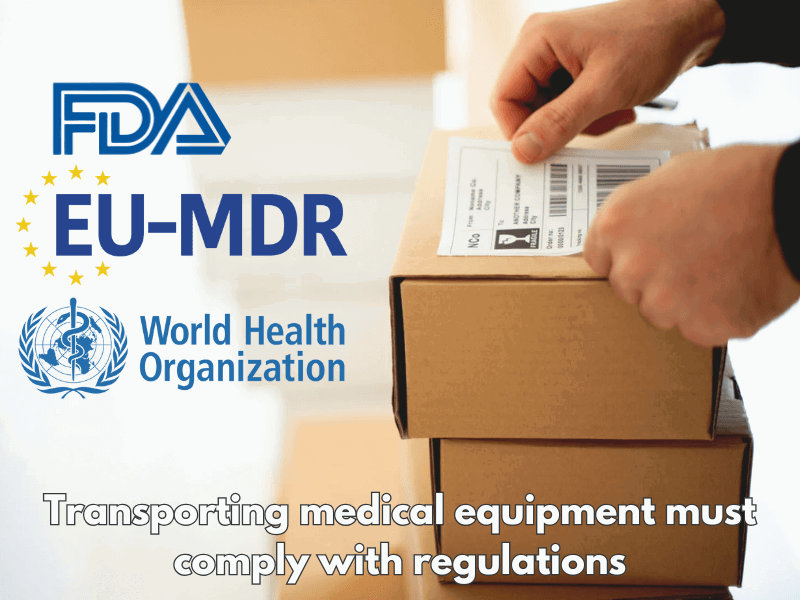
Many medical devices and supplies are sensitive to temperature fluctuations, such as diagnostic kits and ventilators.
Cold Chain Logistics: Specialized refrigeration units and insulated packaging ensure devices remain within prescribed temperature ranges.
Temperature Monitoring: IoT-enabled sensors provide real-time temperature data, reducing risks of damage during transit.
Failure to maintain the right conditions can lead to device malfunction, financial losses, or risks to patient safety.
Real-time tracking is critical to monitor shipment progress and ensure timely delivery.
Advanced GPS Systems: These provide precise location updates for high-value medical shipments.
Blockchain Technology: This ensures tamper-proof documentation and enhances accountability.
Incident Alerts: Immediate notifications for temperature deviations, delays, or accidents allow for corrective actions.
Transparent logistics ensure confidence in shipping medical equipment and reduce the risk of disruptions.
The packaging must protect devices from external factors such as shock, vibration, and moisture.
Custom Foam Inserts: Tailored cushioning materials safeguard fragile devices like MRI components or surgical tools.
Tamper-Evident Seals: These ensure security against unauthorized access.
Sustainability: Eco-friendly packaging is increasingly vital as regulations push for reduced environmental impact.
Investing in superior packaging mitigates risks of loss or damage, ensuring device reliability upon delivery.
Timely delivery is crucial for medical devices, especially those destined for hospitals, disaster zones, or research facilities.
Optimized Routes: Using multimodal transportation-air, sea, and road-shortens delivery timelines.
Express Shipping Options: Services like same-day air freight address urgent medical needs.
Customs Pre-Clearance: Reducing bottlenecks at borders accelerates transit times.
Efficient logistics partnerships ensure medical devices arrive when they’re needed most.
Customs procedures are often a significant hurdle in shipping medical equipment globally.
Accurate Classification: Medical devices must be correctly categorized under Harmonized System (HS) codes to avoid delays.
Import Licenses: Some countries require permits for importing specific devices, such as imaging systems or life-support machines.
Proactive Documentation: Including commercial invoices, packing lists, and certificates of origin is non-negotiable for smooth customs processing.
A misstep in paperwork can lead to fines, confiscation, or returned shipments.
Given the high value and sensitivity of medical devices, robust insurance coverage is non-negotiable.
Cargo Insurance: Protects against financial losses due to damage, theft, or delays.
Risk Assessments: Logistics providers conduct risk analyses to identify and mitigate potential issues in shipping medical supplies.
Shipping medical equipment and supplies requires attention to detail, from compliance and temperature control to efficient packaging and tracking. Partnering with a reliable logistics provider with expertise in medical device shipping ensures that all requirements are met, delivering critical healthcare solutions safely and on time.
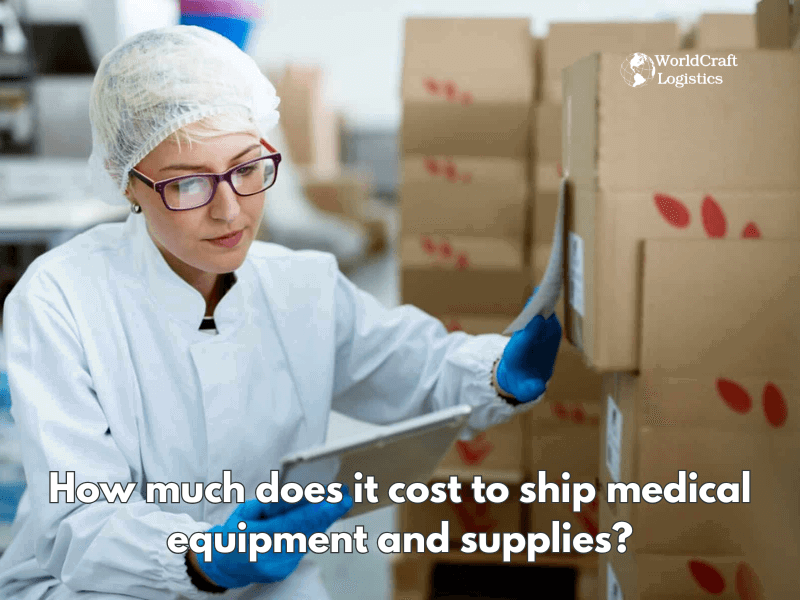
Shipping medical equipment and supplies involves various costs influenced by factors such as distance, weight, dimensions, urgency, and specific handling requirements. Below is a detailed breakdown of estimated shipping costs from various carriers:
Shipping Service | Company | Delivery Type | Price Estimate | Additional Notes |
Local Medical Courier Services | Bocsit, Dropoff | Regular Service | $26.00 (0-10 miles) | Price increases with distance. |
$36.00 (11-15 miles) | 2-hour rush services available at higher rates. | |||
2-Hour Rush Service | $41.00 (0-10 miles) | Best for urgent deliveries within local areas. | ||
$56.00 (16-20 miles) | ||||
National Medical Courier Services | Dropoff, Postmates | Same-Day Delivery | $50.00 (within city) | Costs increase for cross-country shipments. |
$200.00 (cross-country) | ||||
Freight Shipping for Larger Equipment | FreightCenter | LTL Shipping | Quote-Based | Ideal for large, heavy medical equipment shipments. |
Varies | Cost depends on weight, dimensions, and destination. | |||
Standard Parcel Shipping | USPS | Priority Mail | $10.40 (Small Flat Rate) | Flat-rate shipping for smaller medical supplies. |
$17.05 (Medium Flat Rate) | ||||
$22.45 (Large Flat Rate) | ||||
Specialized Medical Equipment Shipping | FreightRun | Tailored Services | Quote-Based | Best for fragile or high-value medical equipment. |
Customized services available for special handling needs. | ||||
International Shipping | FedEx, UPS | Global Healthcare Shipping | Quote-Based | Varies by destination and specific medical needs. |
Shipping times and costs depend on customs and regulations. |
*Factors Affecting Shipping Costs:
Distance: Longer distances generally lead to higher costs.
Weight and Dimensions: Heavier or bulkier items tend to be more expensive to ship.
Urgency: Expedited shipping services will increase the cost significantly.
Special Handling: Fragile or high-value equipment may incur additional charges.
Insurance: Shipping valuable items with insurance will raise the total cost.
This table provides a comprehensive comparison of various shipping services for medical equipment and supplies. For precise pricing, always consult directly with carriers and use online calculators for tailored quotes.
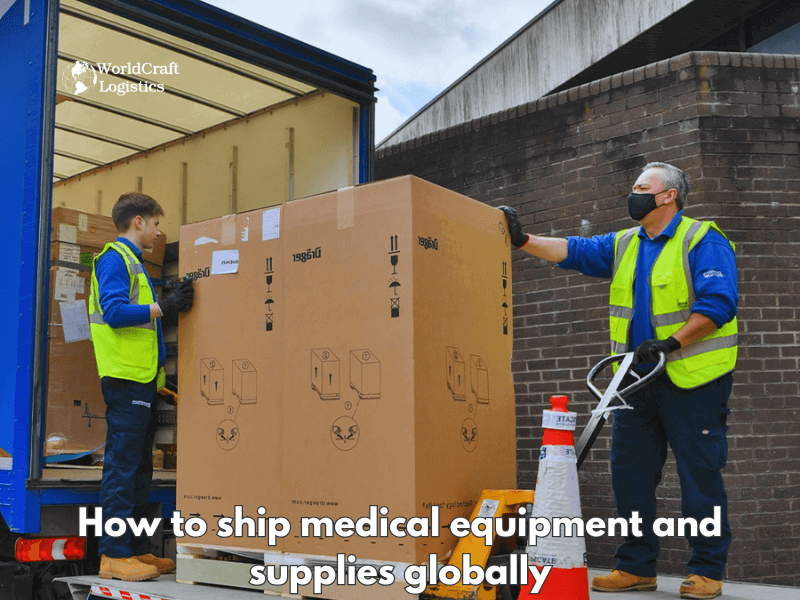
Shipping medical equipment and supplies globally requires careful planning, adherence to regulations, and choosing the right logistics solutions. Here’s a step-by-step guide to help you navigate the process:
Step #1: Understand Your Shipment’s Requirements
Before choosing a shipping method, assess your shipment's characteristics:
Type of Equipment: Determine whether the items are fragile, high-value, or temperature-sensitive.
Size and Weight: Larger, heavier items may require freight or specialized services.
Urgency: Decide whether you need expedited shipping or standard transit times.
Destination: Consider international regulations and customs requirements specific to your destination country.
Step #2: Choose the Right Shipping Carrier
Selecting the right shipping company is critical for timely, safe delivery. Here are some options:
Local Courier Services: Ideal for domestic shipments or local deliveries within specific regions.
Freight Shipping: For large shipments, such as hospital equipment or bulk supplies, LTL (Less Than Truckload) or FTL (Full Truckload) services are often required.
International Carriers: For cross-border shipments, use trusted international shipping companies like FedEx, UPS, or DHL that specialize in healthcare shipping services.
Step #3: Ensure Compliance with Regulations
Medical equipment and supplies are subject to strict regulatory requirements, including:
FDA Regulations: For shipments within or to the U.S., ensure your equipment complies with FDA regulations.
Customs Declarations: Prepare accurate customs documentation, including invoices, product descriptions, and any necessary certifications.
International Standards: Ensure your shipments meet the destination country’s regulations, such as CE marking in the EU or specific health and safety certifications.
Controlled Substances: If shipping medical supplies like pharmaceuticals or narcotics, additional certifications and licenses may be required.
Step #4: Packaging Medical Equipment for Shipping
Proper packaging is essential to protect your shipment from damage during transit. Follow these steps:
Use High-Quality Materials: Employ durable packaging materials such as corrugated boxes, foam padding, and air cushions to prevent breakage.
Temperature Control: For temperature-sensitive supplies, use refrigerated packaging or temperature-controlled containers to maintain the required conditions.
Labeling: Ensure each package is clearly labeled with detailed instructions (e.g., “Fragile,” “Keep Upright,” “Temperature-Sensitive”) and include contact details.
Tamper-Evident Packaging: For high-value or sensitive medical supplies, use tamper-proof packaging to ensure security during transit.
Step #5: Choose the Shipping Mode and Service
Based on the shipment's size, value, and destination, choose the appropriate service:
Air Freight: Ideal for urgent international deliveries, especially for high-value or life-critical equipment.
Ocean Freight: Suitable for large shipments that aren’t urgent, as it’s more cost-effective for bulky items.
Ground Shipping: Best for domestic shipments or cross-border deliveries that don’t require air travel.
Additionally, many shipping companies offer specialized services like:
Cold Chain Shipping: For temperature-sensitive medical supplies, this service ensures that the equipment stays within the required temperature range.
White-Glove Delivery: For high-value or fragile equipment that requires extra care during handling.
Step #6: Prepare the Necessary Documentation
Shipping medical supplies and equipment internationally requires a set of key documents:
Commercial Invoice: Detailing the contents, value, and destination of the shipment.
Packing List: Provides a detailed description of all items being shipped.
Export License: If required by the shipping country, especially for controlled items.
Certificate of Origin: Verifies the country of manufacture.
Bill of Lading (BOL): A receipt for the shipment and a contract for transportation.
Insurance Documents: If you have purchased insurance for the shipment, make sure the documentation is included.
Step #7: Ship the Equipment
Once all preparations are complete, it’s time to ship your medical equipment and supplies. Here’s what to do:
Track the Shipment: Use the carrier’s tracking system to monitor the progress of the shipment in real-time.
Confirm Delivery: Ensure that the medical supplies reach the recipient on time and in proper condition.
Step #8: Customs Clearance
If shipping internationally, customs clearance is a crucial step:
Complete Paperwork: Make sure all necessary documents are provided for smooth customs clearance.
Duties and Taxes: Some countries charge import duties or taxes on medical equipment and supplies. Be prepared to pay these or have the recipient handle them.
Coordinate with a Customs Broker: For complex shipments, consider hiring a customs broker to assist with paperwork and ensure compliance.
Step #9: Final Delivery and Acknowledgment
After customs clearance, the shipment will be delivered to the destination:
Final Inspection: Upon arrival, the recipient should inspect the shipment to confirm it meets the required specifications and hasn’t been damaged.
Receive Acknowledgment: Secure acknowledgment from the recipient or healthcare facility that the equipment has arrived in good condition.
Shipping medical equipment and supplies globally involves understanding logistics, complying with regulations, ensuring proper packaging, and selecting the right shipping method. By following this step-by-step guide, you can ensure your medical equipment reaches its destination safely and on time.
Here's a table summarizing the additional resources on shipping requirements for medical products:
Resource Type | Title/Organization | Key Topics | Website |
Regulatory Guidelines | FDA (U.S. Food and Drug Administration) | Medical device shipping, labeling, packaging, and registration requirements | FDA Medical Device Shipping |
Regulatory Guidelines | European Medicines Agency (EMA) | CE marking, medical device classification, EU import requirements | |
Regulatory Guidelines | International Medical Device Regulators Forum (IMDRF) | Global harmonization, regulatory policies, international trade guidelines | |
Logistics Providers | DHL Global Forwarding | Temperature-controlled shipping, hazardous materials handling, global supply chain management | DHL Healthcare Logistics |
Logistics Providers | FedEx Healthcare Solutions | Cold chain solutions, medical device shipping, biopharmaceutical transportation | FedEx Healthcare |
Industry Reports | Medical Device Manufacturers Association (MDMA) | FDA regulations, medical device distribution, compliance guidelines | |
Industry Reports | Transport Topics – Healthcare Logistics | Shipping challenges, regulatory changes, medical freight best practices | Transport Topics Healthcare |
Industry Reports | Logistics Management – Medical Device Logistics | Shipping solutions, packaging, regulatory issues in medical freight | |
Online Tools | CargoWise by WiseTech Global | Freight management, compliance, supply chain automation | |
Online Tools | FedEx Trade Networks | Documentation, customs clearance, compliance management | FedEx Trade Networks |
Educational Courses | International Air Transport Association (IATA) | Pharma and healthcare logistics, packaging, regulatory compliance | IATA Pharma |
Educational Courses | Healthcare Distribution Alliance (HDA) | Healthcare distribution, shipping medical supplies, compliance best practices | HDA Education |
*This table provides a clear and concise overview of the resources available for those involved in shipping medical products. Each entry includes key topics, along with links to relevant websites for further exploration.
In conclusion, shipping medical equipment and supplies globally is not just a logistical challenge, but a responsibility to ensure that vital healthcare resources reach their destination safely and on time. By understanding the regulations, partnering with trusted carriers, and following the proper procedures, healthcare providers and organizations can rest assured that their shipments will be delivered in optimal condition. Always stay informed and prepared, and you’ll navigate the complexities of global medical shipping with confidence.
Most medical equipment, such as diagnostic devices, surgical tools, and hospital furniture, can be shipped globally. However, the shipment of certain items like radioactive materials or controlled substances may require additional permits or restrictions.
Regulations vary by country but often include compliance with FDA (or equivalent) certifications, customs clearance, and adherence to international standards like ISO 13485 for medical devices.
Medical equipment should be packaged securely using padded materials, sealed boxes, and weather-resistant packaging to ensure it remains undamaged during transit. Fragile items should have clear labeling, and sterilized equipment must maintain its sterility.
Yes, many countries impose strict regulations on the import of used or refurbished medical devices. It is essential to verify the receiving country’s requirements and ensure compliance with labeling, certifications, and safety standards.
The ideal shipping method depends on the urgency and type of supplies. Air freight is preferred for time-sensitive shipments, while sea freight is cost-effective for bulkier, less urgent shipments.
In many cases, yes. Certain countries require importers to have specific licenses for medical devices or equipment. It’s crucial to check the regulations of the destination country beforehand.
Temperature-sensitive supplies should be transported using specialized containers with temperature controls, such as refrigerated packaging, dry ice, or cold chain logistics, to maintain product integrity.
Common documents include a commercial invoice, packing list, certificate of origin, airway bill (or bill of lading), and any certifications required for medical devices, such as CE marking or FDA approval.
Yes, customs duties and taxes may apply depending on the country and the type of medical supplies. Some countries offer duty exemptions for essential medical items, especially during emergencies.
Partnering with a logistics provider experienced in medical equipment shipping can help ensure compliance. They can assist with customs documentation, regulatory requirements, and proper packaging.
SEO
Digital Marketing/SEO Specialist
Simon Mang is an SEO and Digital Marketing expert at Wordcraft Logistics. With many years of experience in the field of digital marketing, he has shaped and built strategies to effectively promote Wordcraft Logistics' online presence. With a deep understanding of the logistics industry, I have shared more than 500 specialized articles on many different topics.

Shipping
12/21/2023
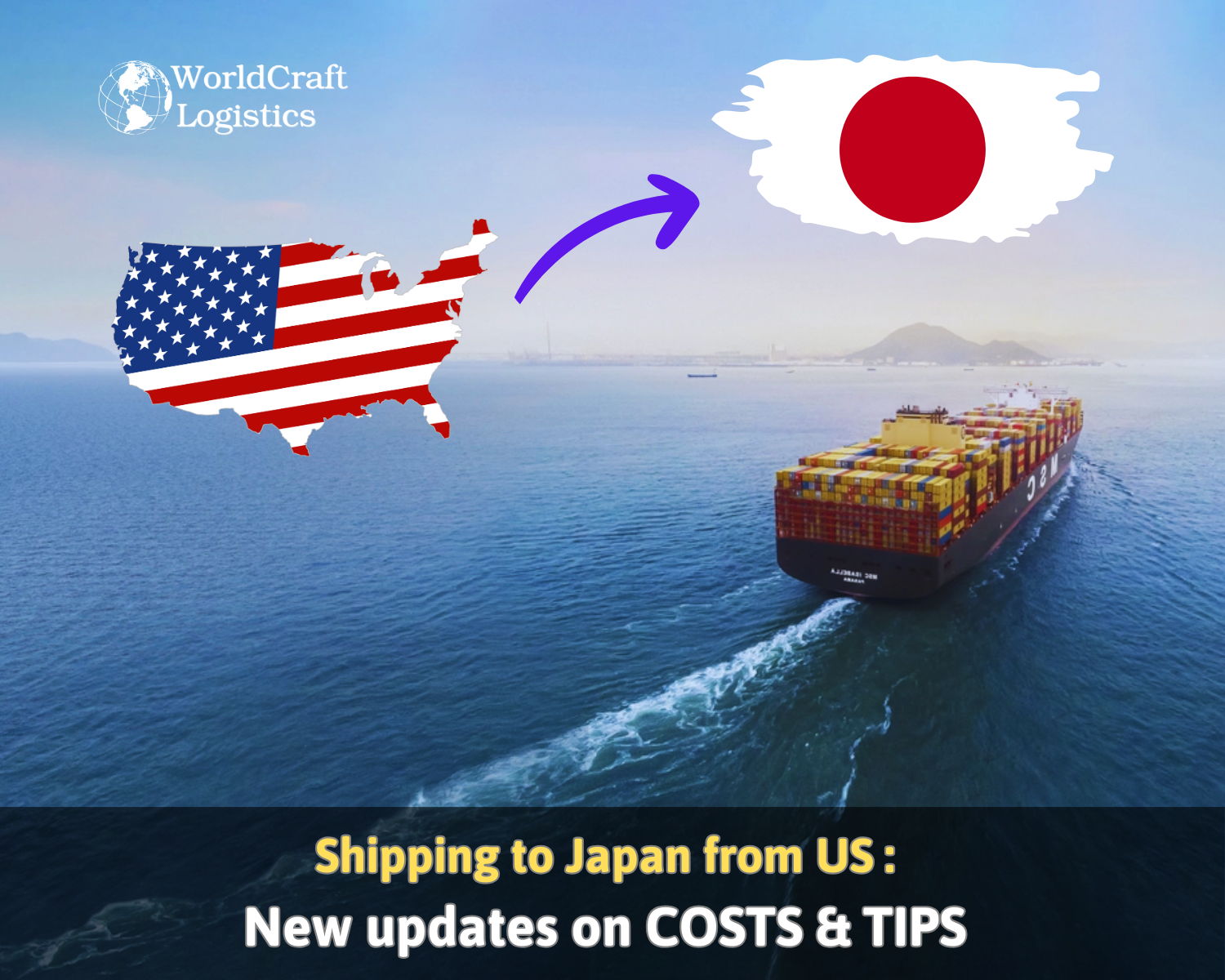
Shipping
02/28/2024

Shipping
12/24/2023
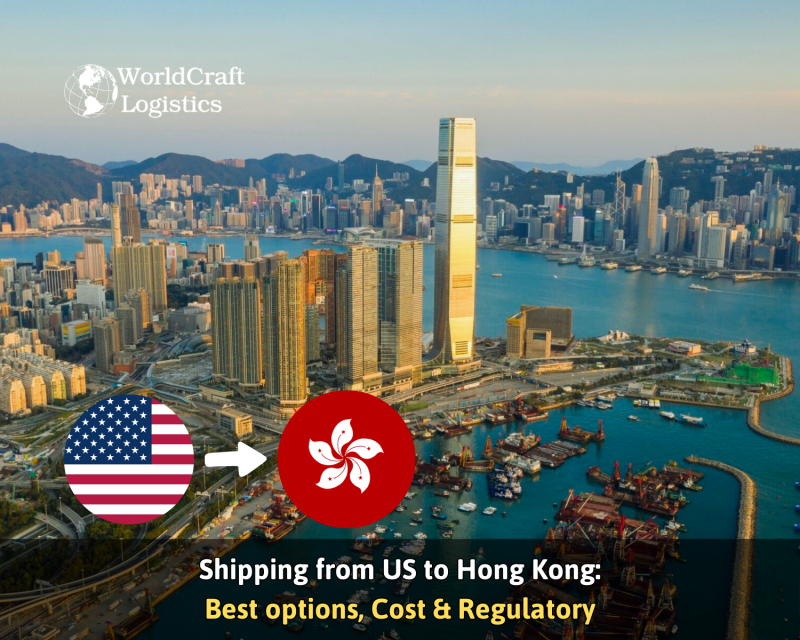
Shipping
04/02/2024
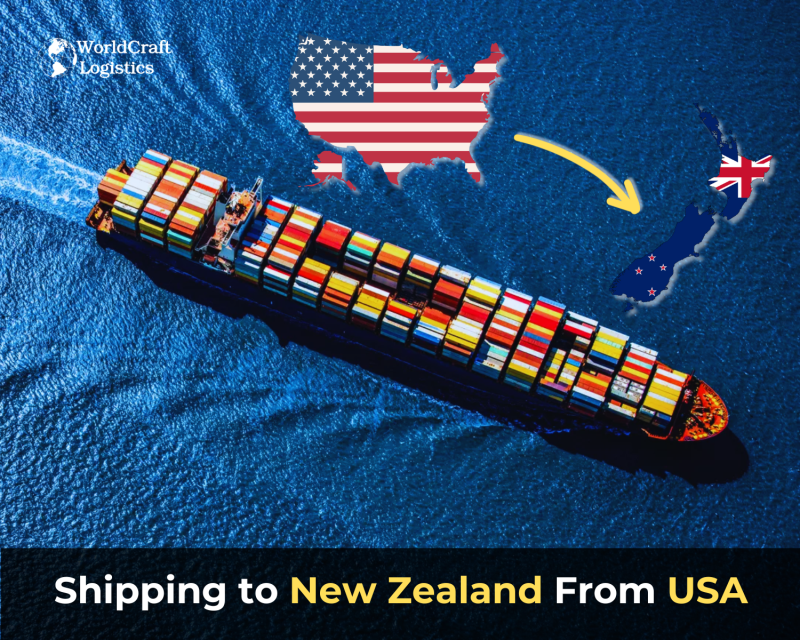
Shipping
11/04/2024